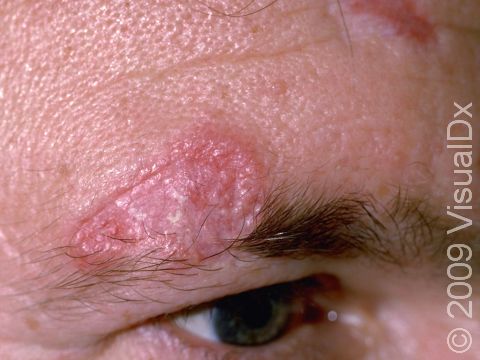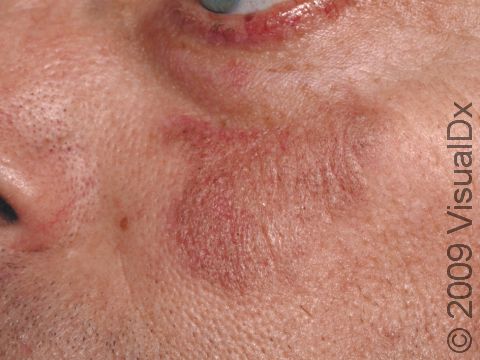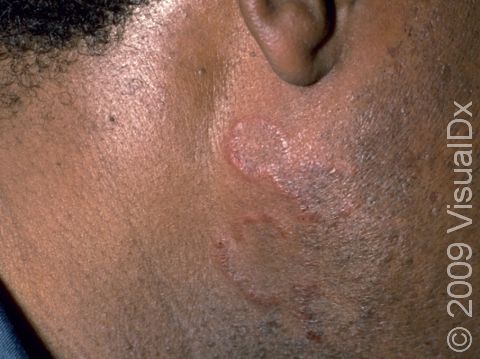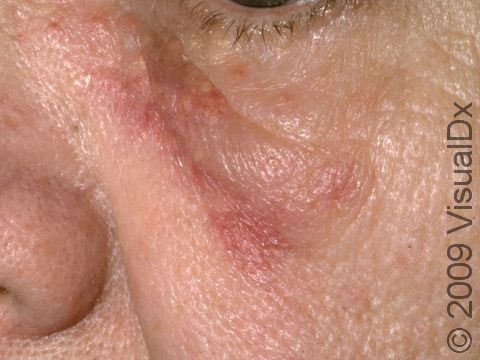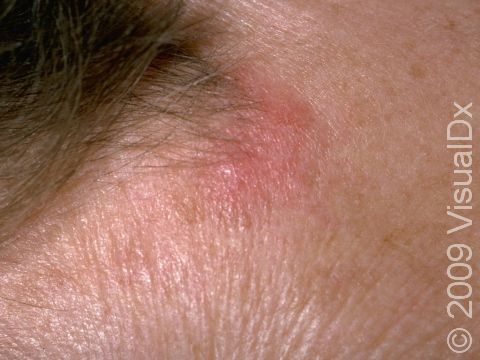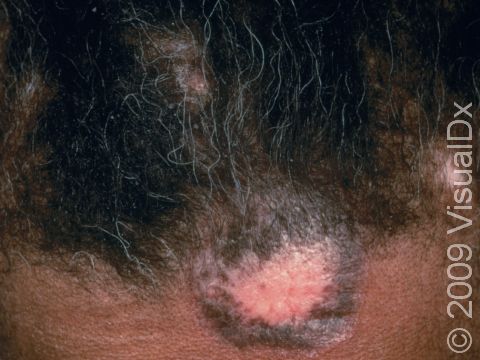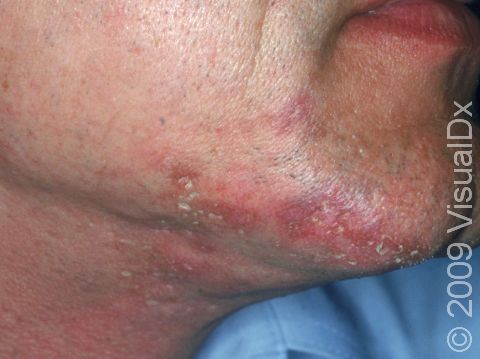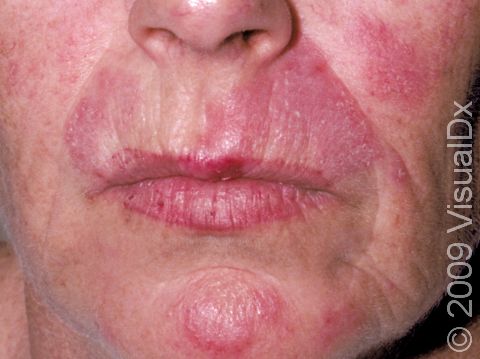Discoid Lupus Erythematosus
Lupus is a disease in which your body’s self-protection mechanism (immune system) attacks your own body rather than a foreign invader. The cause of lupus is unknown, and the disease usually takes one of two forms: systemic lupus erythematosus (SLE), which can affect any body organ; and discoid lupus erythematosus (DLE), which is milder and usually affects only the skin. About 5%–10% of patients with discoid lupus erythematosus will progress to systemic lupus.
Who's At Risk?
Discoid lupus erythematosus most commonly afflicts young adult females, especially individuals of African and Hispanic descent, though it may occur at any age and it occurs worldwide. Lupus sometimes runs in families.
Signs & Symptoms
The face (bridge of the nose, cheeks, lower lip, the ears, or inside the mouth) and/or the scalp are most often affected. Sometimes the trunk as well as the arms and legs (extremities) are more extensively involved.
The skin lesions may vary in appearance; a red bump or patch may appear first and is usually painless or only slightly itchy. The area may be scaly or even wart-like. With time, the center of the lesion becomes white and scarred, with permanent hair loss. Lesions in darker-skinned people may be darker brown, changing to a purple color at the edges. The lesions often (but not necessarily) occur in sun-exposed areas.
Self-Care Guidelines
- Avoid sunlight exposure.
- Sunscreens with UVB and UVA blockers (such as Parsol 1789, zinc, or titanium dioxide) are recommended.
- Remember that clothing (dark colors and closely woven fabrics) and hats are very effective sun-blockers.
- Excessive heat, excessive cold, and trauma to the affected regions may make the condition worse.
- Use cosmetics (such as Covermark® or Dermablend™) to cover affected areas.
Treatments
- Blood tests and a biopsy will be done to confirm the diagnosis.
- There is no cure, but treatment will control symptoms until the disease improves on its own, usually after months to years of treatment.
- Topical corticosteroids are generally used first; for small areas, corticosteroids may be injected into the lesions.
- Other topical immunosuppressive agents (such as tacrolimus or pimecrolimus cream) may be helpful.
- Antimalarial drugs (hydroxychloroquine, chloroquine, or quinacrine) can be used for severe cases.
- Other oral medications may include dapsone, acitretin, isotretinoin, or gold. All oral medications have potential side effects. Recent studies have shown thalidomide to be effective, but it is generally reserved for severe cases that do not respond to other treatments, and doctors administer them with great caution due to their potential side effects.
Visit Urgency
Because discoid lupus erythematosus can cause permanent scars and hair loss, you should seek medical care if you suspect you may have this condition.
Trusted Links
References
Bolognia, Jean L., ed. Dermatology, pp.603, 605, 992. New York: Mosby, 2003.
Freedberg, Irwin M., ed. Fitzpatrick’s Dermatology in General Medicine. 6th ed, pp.1047. New York: McGraw-Hill, 2003.
Last modified on October 5th, 2022 at 7:37 pm

Not sure what to look for?
Try our new Rash and Skin Condition Finder
